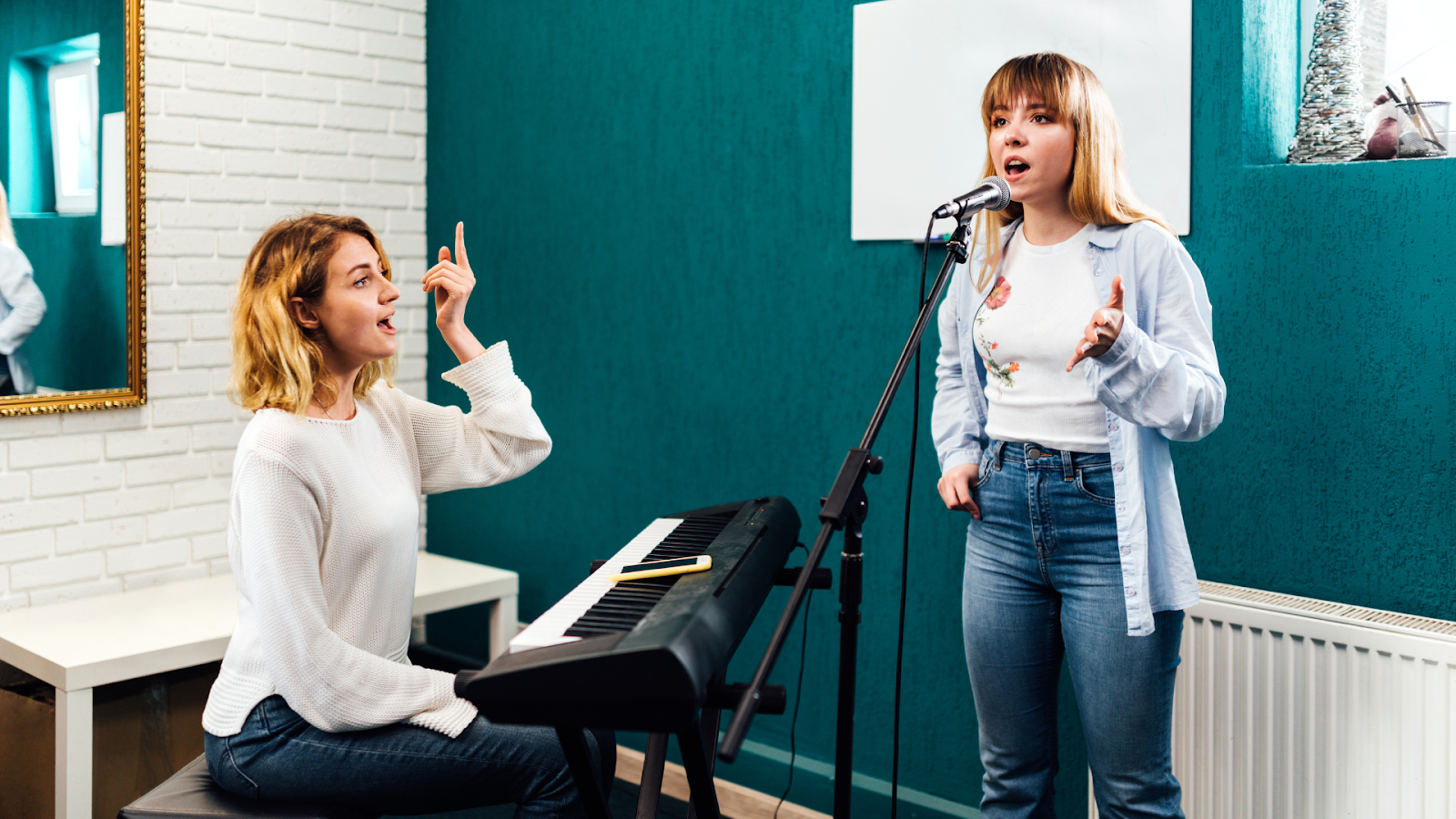As a vocal artist, your talent goes far beyond hitting the right notes. What truly captivates an audience is how you deliver the music—your energy, expression, and connection on stage. Whether you’re performing in an intimate venue or on a major festival stage, how you present yourself can elevate your show from good to unforgettable.
Great stage presence is a blend of preparation, authenticity, and charisma. The best performers know how to hold attention, command the room, and make their audience feel something. Here are seven performance techniques that will help you stand out and leave a lasting impression every time you step on stage.
1. Own the Stage with Confidence
Confidence isn’t just a feeling—it’s a skill you can develop. Even if you’re nervous, projecting self-assurance is crucial for engaging your audience. Your body language should communicate that you belong on stage.
Stand tall, keep your shoulders relaxed, and make intentional movements. Avoid pacing or fidgeting, which can appear uncertain. Practice your set enough that you know your material cold—confidence naturally follows preparation.
Pro Tip: Use visualization techniques before you perform. Imagine yourself owning the stage and connecting with the crowd. This mental rehearsal can work wonders.
2. Use Dynamic Facial Expressions
Your voice conveys emotion, but your face reinforces it. Great vocalists know how to match their facial expressions with the story of the song.
Practice singing in front of a mirror or record yourself to study your natural expressions. Are you conveying joy, heartbreak, tension, or excitement? Let your audience feel what you’re feeling—don’t be afraid to show it.
Facial expression adds authenticity and depth to your performance, especially when lyrics carry emotional weight.
3. Make Eye Contact (Even in a Big Crowd)
Eye contact is one of the most powerful ways to create intimacy with an audience, even in a large space. When you scan the room and lock eyes with individual fans (or look just above heads when direct contact isn’t possible), you create a personal experience.
It shows that you’re present, not just performing on autopilot. Your connection with your listeners becomes real when they feel seen.
Pro Tip: Divide the audience into zones and periodically focus on each one. This helps you engage the entire room.
4. Incorporate Intentional Movement
Movement on stage should enhance the music—not distract from it. Every step, gesture, or turn of your body should be deliberate and rhythmically aligned with your performance.
Try mapping out moments in your set where a walk to the edge of the stage or a dramatic pause will add impact. Simple choreography or planned stage blocking can add polish, especially for upbeat songs.
However, balance is key. Avoid over-choreographing to the point that your performance feels robotic. Keep it expressive, not scripted.
5. Interact with the Band (or the Track)
If you’re performing with a live band, interacting with your musicians adds another layer of authenticity. Smiling at your guitarist during a solo, or cueing a drummer with a look, makes your show feel spontaneous and alive.
Even when singing over a backing track, you can emulate this by reacting to the instrumental breaks or engaging with the rhythm.
When your energy bounces off the music, it pulls the audience into the performance and reminds them you’re living in the moment—not just following a script.
6. Tell a Story Between Songs
What you say between songs matters. Use those transitions to speak directly to your audience—tell a short story, share what the next song means to you, or shout out the city you’re performing in.
Your voice as a speaker is just as important as your voice as a singer. These moments of conversation create relatability and let your personality shine through.
Pro Tip: Keep your banter concise and heartfelt. Rambling or overexplaining can lose momentum, but a few well-placed words build rapport and keep the energy flowing.
7. Master Your Mic Technique
Great mic technique is a game changer. Pulling back slightly on big notes, angling the mic for clarity, and avoiding breath pops all contribute to a clean, professional sound.
Practice using your microphone just like an instrument. Learn how to position it for consistency, when to use handheld versus stand-mounted, and how to avoid over-modulating or under-projecting.
If you’re pursuing a vocal degree program, mic technique is likely something you’ll be trained on extensively—and for good reason. Poor technique can sabotage an otherwise stellar performance.
Standing out on stage isn’t about gimmicks or trying to be someone you’re not. It’s about bringing your full self to the performance—vocally, emotionally, and physically. The best artists aren’t just heard; they’re felt.
By developing these seven performance techniques, you’ll deliver more powerful shows, connect more deeply with your audience, and elevate your presence as a vocal artist. Every time you perform is an opportunity to leave your mark—so take the stage like it’s yours.








